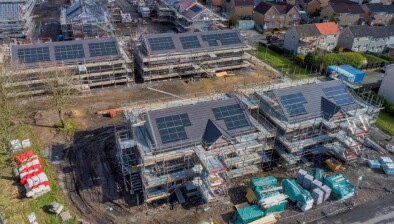Fraser Mitchell: Infrastructure levy a chance to clarify planning process
Fraser Mitchell, planning partner at law firm Shoosmiths in Edinburgh, warns that the Scottish Government must act on new legislation or an opportunity might disappear into the sunset.

Fraser Mitchell
The Planning (Scotland) Act 2019 has arrived following the most recent review of the Scottish planning system. In amongst significant changes to development planning and modest changes to development management are the proposed new Infrastructure Levy Regulations. Somewhat unusually in a planning context, these planned regulations are subject to a “sunset clause,” meaning if the regulations don’t become law within seven years, Scottish ministers will lose the power to bring them into force.
Proposals to introduce a form of infrastructure levy are not new, although these are the first to reach the statute book in Scotland. The Community Infrastructure Levy (CIL) was introduced in England and Wales in 2010. Since, there has been a focus in some quarters of government to give Scotland a similar levy. The emergence of a new Planning Act has given the Scottish Parliament the chance to create one.
Under the current proposals, the aim of the infrastructure levy is straightforward. Individual local authorities would be entitled to seek payments, in connection with the grant of planning permissions, to be used “to fund, or contribute towards funding, infrastructure projects”. These projects include communications, transport, drainage, sewerage, flood defence, water and energy systems, features of the natural and built environment and educational, medical and recreation facilities.
A well-considered, designed and operated infrastructure levy could provide clear benefits to developers and local authorities alike. Appealing factors include the developer knowing at the inception of a project how much they would be expected to pay towards infrastructure requirements. Local authorities would have clarity of how much they are likely to receive, in turn allowing them to make clearer plans.
This is in contrast to the current position, whereby landowners and local authorities negotiate a planning agreement before planning permission is released. These agreements may require financial contributions to be paid or physical works to be carried out, either before or at certain points during the development works. However, where planning obligations are sought, the assessments and reasons that underpin them can be unclear. An infrastructure levy could resolve that issue, setting out a consistent schedule of contributions that would apply to certain types of development.
However, under the current proposals several issues with the regulations remain unresolved. To summarise:
The regulations don’t clarify how the levy will operate. The Scottish Government has still not identified a preferred approach or shared further details.
The regulations do not (as currently drafted) seek to replace planning agreements. This means local authorities may still seek planning obligations through planning agreements, in addition to contributions secured through the levy. These would be likely to relate to “site-specific” matters required solely as a result of the intended development (for example, funding of local road improvements) rather than wider strategic matters identified and planned for by the local authority.
If this dual approach to seeking “planning gain” (i.e. through the levy and planning agreements) remains, it is unlikely to make a material improvement to the current system for securing planning obligations through agreements.
A further concern is that in England and Wales, CIL has been far from a success. It would be wise for the levy in Scotland to avoid the pitfalls of its neighbour.
To be fair, recent changes have been introduced to increase CIL’s effectiveness and changes to legislation designed to improve an administrative system should be welcomed. However, this does fuel concern in relation to the levy, since the regulations were drafted without the Scottish Government identifying a detailed approach for its operation.
Consequently, pertinent questions remain about the viability of a levy. This includes the revenue likely to be generated through contributions and its benefit when compared to the current method of securing relevant planning obligations through negotiated planning agreements.
The Scottish Parliament has therefore included the sunset clause. Its inclusion reflects the uncertainty around the levy and its operation. Time will tell if the levy is embraced.

- Fraser Mitchell is a planning partner in the real estate team at Shoosmiths in Edinburgh. This article first appeared in The Scotsman.








